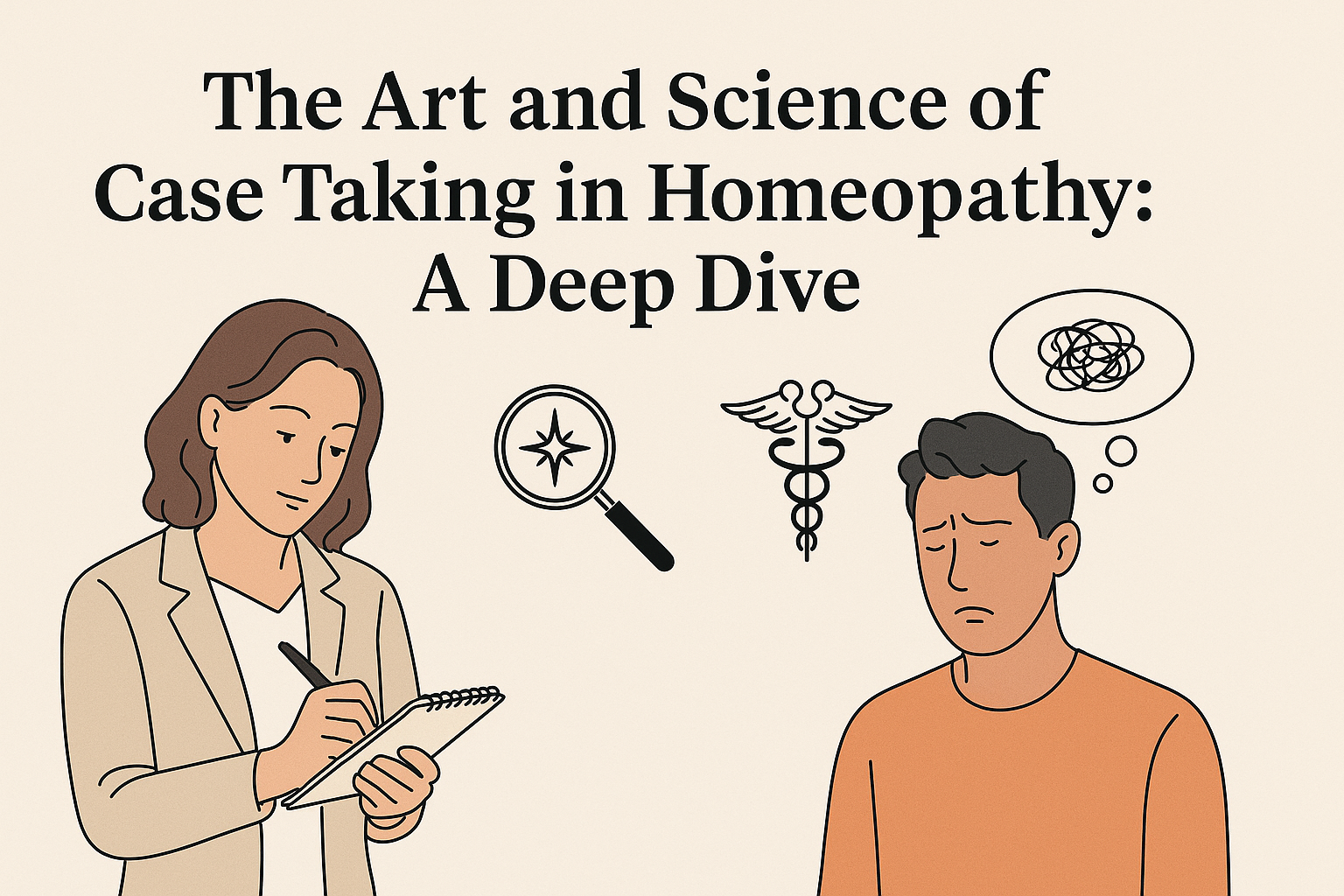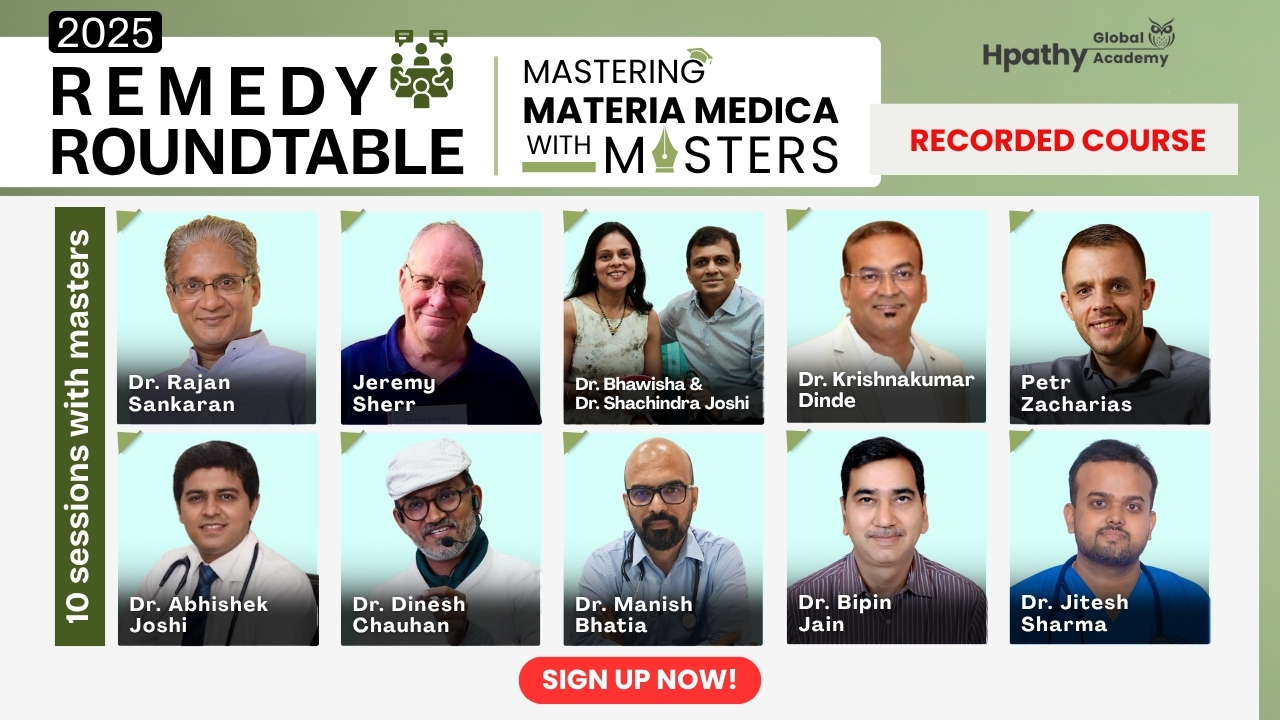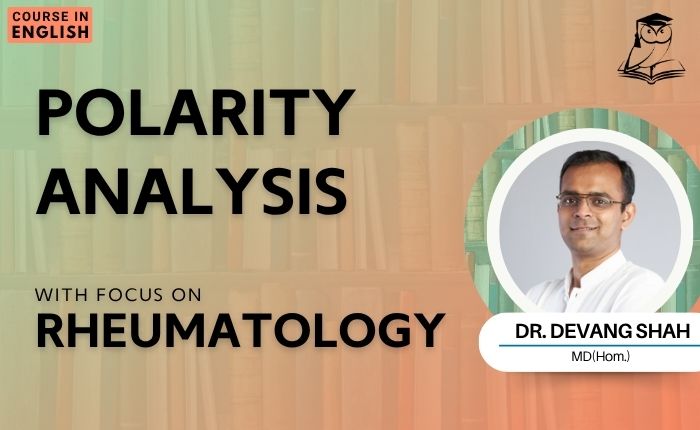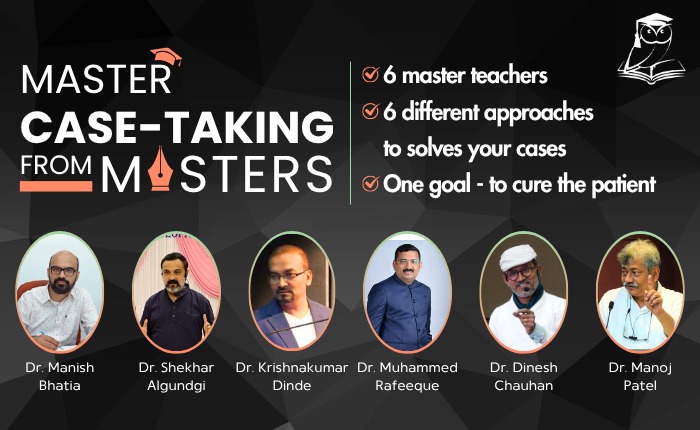By Dr. Manish Bhatia
Case taking is not merely the preliminary step in homeopathic treatment — it is the cornerstone upon which the entire edifice of homeopathic prescription rests. For the advanced practitioner, case taking becomes an art form, a clinical meditation that blends perception, pattern recognition, psychological insight, and philosophical grounding.
In this post, we will explore the deeper aspects of the case-taking process in classical homeopathy, highlighting not only the “what” but also the “why” behind each phase.
1. The Purpose of Case Taking
In homeopathy, we treat the patient, not the disease. This foundational axiom drives a need for a case-taking process that captures the totality of symptoms — the full constellation of mental, emotional, physical, and general expressions of the vital force under stress.
Advanced case taking is about:
- Understanding the patient’s innate pattern of reactivity.
- Identifying strange, rare, and peculiar expressions.
- Perceiving the deeper delusion or core sensation.
- Grasping the evolution of the case over time — the timeline of stress, adaptation, compensation, and decompensation.
2. Levels of Case Taking
A well-rounded homeopath works across multiple levels of observation, including:
a. Physical Symptoms and Generals
These include:
- Location, sensation, modality, and concomitants (LSMC).
- Generals: thermal preferences, food cravings/aversions, sleep, perspiration, menses, etc.
b. Emotional Sphere
The practitioner must look beyond labels like “anxiety” or “depression,” and identify:
- Coping mechanisms
- Triggers
- Emotional intensity and depth
- Core themes (e.g., forsaken feeling, fear of failure, need for control)
c. Mental Sphere
A careful observation of:
- Thought patterns
- Cognitive distortions
- Perception of self and the world
- Delusions and fixed ideas
This is where techniques from Sankaran’s Sensation Method, the Sehgal Method, or Kentian approaches can deepen our understanding.
d. Miasmatic Background
An advanced practitioner always traces the chronic miasmatic influence — identifying if the case shows:
- Psoric struggle and hope
- Sycotic concealment and excess
- Syphilitic destruction and hopelessness
- Tubercular restlessness and change
- Cancerinic perfectionism and control
3. Listening for the Pattern
Much of advanced case taking is about listening between the lines.
- Is the patient repeating words or gestures?
- Is there a peculiar phrase that recurs in different contexts?
- What metaphors do they naturally use? (e.g., “I feel trapped,” “like I’m under water,” “everything collapses suddenly”)
This subconscious leakage of core experience often holds the key to remedy selection.
4. Creating the Case Timeline
A chronological understanding of the patient’s life events — especially those involving shock, grief, suppression, or trauma — is vital. Often, remedy states emerge as adaptations to unresolved life stresses.
Mapping:
- Major physical illnesses
- Emotional traumas
- Medication history
- Vaccination effects
- Suppression of discharges or skin conditions
…helps in understanding the evolution of disease and likely blocks to cure.
5. Active vs Passive Inquiry
The skilled homeopath balances:
- Passive Listening: Letting the patient narrate freely, in their own words, without interruption — capturing their language and metaphors.
- Active Probing: Guiding with focused questions to clarify modalities, explore sensations, or uncover suppressed emotions.
For example:
“Tell me more about what happens when you get angry. How do you express it?”
“You said you feel ‘trapped’ — can you describe what that means for you?”
6. Observation and Non-Verbal Cues
Often, the unspoken speaks louder:
- Body language
- Facial expressions
- Tone, speed, and rhythm of speech
- Reactions to questions
These observations must be noted meticulously and sometimes weigh as heavily as verbal symptoms.
7. The Role of the Practitioner’s State
An advanced practitioner knows that their own state of being influences the case-taking process. Presence, empathy, patience, and clarity are essential.
Avoiding premature interpretations or biases is critical. The patient must be seen as they are, not filtered through the practitioner’s assumptions.
8. Thematic and System-Based Approaches
Modern homeopathy has offered rich insights through systems like:
- Kingdom classification: Mineral, Animal, Plant
- Miasmatic grids (Sankaran)
- Levels of Health (Vithoulkas)
- Repertorial strategies (Boenninghausen, Boger, Kent)
Each has implications for what kind of data you elicit and how you interpret it. The best practitioners fluently shift between systems based on the case in front of them.
9. Documentation and Analysis
Every detail counts. A good case record includes:
- Verbatim patient words in quotes
- Hierarchically arranged symptoms (based on importance and peculiarity)
- Physician’s observations
- Repertorization notes or mapping into a remedy grid
- Follow-up plan with posology considerations
10. Final Thoughts: The Case as a Story
Ultimately, a homeopathic case is a narrative of the vital force, an unfolding story of inner conflict, adaptation, and compensation. The homeopath’s role is not merely to collect symptoms but to perceive the coherence in the chaos.
Advanced case taking demands clinical skill, philosophical insight, psychological sensitivity, and above all — the humility to let the patient’s inner world reveal itself in its own time.
“The physician’s high and only mission is to restore the sick to health, to cure, as it is termed.” – §1, Organon of Medicine
And that mission begins with a single act: listening deeply.
If you would like to master the art of case taking and learn various approaches to homeopathic case taking, join our Mastering Case Taking with the Masters course today.








